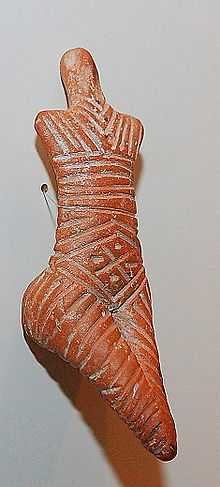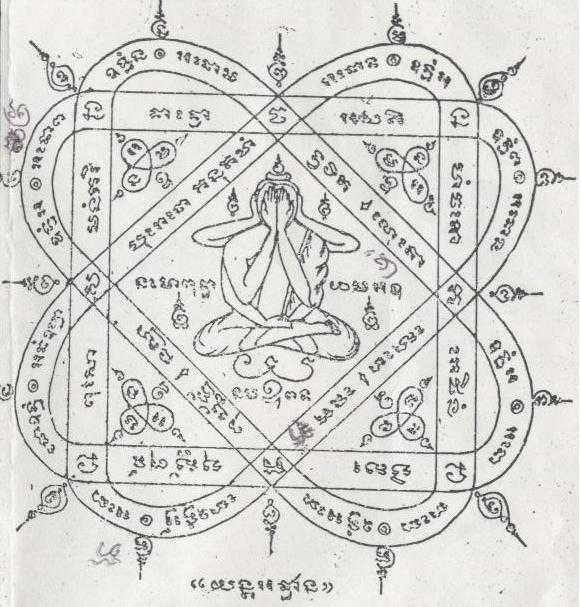Lozenge

A lozenge (◊), often referred to as a diamond, is a form of rhombus. The definition of lozenge is not strictly fixed, and it is sometimes used simply as a synonym (from the French losange) for rhombus. Most often, though, lozenge refers to a thin rhombus—a rhombus with acute angles of 45°.[1] The lozenge shape is often used in parquetry and as decoration on ceramics, silverware and textiles. It also features in heraldry and playing cards.
Symbolism

The lozenge motif dates as far back as the Neolithic and Paleolithic period in Eastern Europe and represents a sown field and female fertility.[2] The ancient lozenge pattern often shows up in Diamond vault architecture, in traditional dress patterns of Slavic peoples, and in traditional Ukrainian embroidery. The lozenge pattern also appears extensively in Celtic art, art from the Ottoman Empire, and ancient Phrygian art.[3]
The lozenge symbolism is one of the main female symbols in Berber carpets.[4] Common Berber jewelry from the Aurès Mountains or Kabylie in Algeria also uses this pattern as a female fertility sign.
In 1658, the English philosopher Sir Thomas Browne published The Garden of Cyrus subtitled The Quincunciall Lozenge, or Network Plantations of the Ancients where he outlined the mystical interconnection of art, nature and the Universe. He suggested that ancient plantations used the quincunx pattern that revealed the "mystical mathematics of the city of Heaven"[5] and proof of the wisdom of God.
Lozenges appear as symbols in ancient classic element systems, in amulets, and in religious symbolism. In a suit of playing cards, diamonds is in the shape of a lozenge.
Encodings
In Unicode, the lozenge is encoded in multiple variants:
- U+2311 ⌑ square lozenge (HTML:
⌑) - U+25CA ◊ lozenge (HTML:
◊◊)[6] - U+2662 ♢ white diamond suit (HTML:
♢) - U+2666 ♦ black diamond suit (HTML:
♦♦) - U+27E0 ⟠ lozenge divided by horizontal rule (HTML:
⟠) - U+29EB ⧫ black lozenge (HTML:
⧫) - U+2B27 ⬧ white medium lozenge (HTML:
⬧) - U+2B28 ⬨ black medium lozenge (HTML:
⬨) - U+2B2A ⬪ white small lozenge (HTML:
⬪) - U+2B2B ⬫ black small lozenge (HTML:
⬫)
In IBM 026 punched card code it is ⌑ (12-8-4),[7] DOS code page 437 (at character code 4)[8] and Mac-Roman.
The LaTeX command for the lozenge is \lozenge.
Applications
Modal logic
In modal logic, the lozenge expresses that there is "possibility." For example, the expression  expresses that it is possible that
expresses that it is possible that  is true.
is true.
Mathematics
In axiomatic set theory, the lozenge refers to the principles known collectively as diamondsuit.
Camouflage

During the First World War, the Germans developed Lozenge-Tarnung (lozenge camouflage).[9] This camouflage was made up of colored polygons of four or five colors. The repeating patterns often used irregular four-, five- and six-sided polygons, but some contained regular rhombi or hexagons. Because painting such a pattern was very time consuming, and the paint added considerably to the weight of the aircraft, the pattern was printed on fabric. This pre-printed fabric was used from 1916 until the end of the war, in various forms and colours.
Heraldry
The lozenge in heraldry is a diamond-shaped charge, usually somewhat narrower than it is tall. A mascle is a voided lozenge—that is, a lozenge with a lozenge-shaped hole in the middle—and the rarer rustre is a lozenge containing a circular hole. A field covered in a pattern of lozenges is described as lozengy; a similar field of mascles is masculy.
Cough tablets
Cough tablets have taken the name lozenge, based on their original shape. According to the Oxford English Dictionary the first use of this sense was in 1530.
In Finland, the lozenge is associated with salmiak, through Apteekin Salmiakki. Thus, the lozenge is commonly called salmiakkikuvio "salmiak shape". The pattern is often used even if the candy is not actually lozenge-shaped.
U.S. Military
To implement 10 U.S.C 773, the Secretary of the Navy has prescribed the following distinctive mark for wear by members of military societies which are composed entirely of honorably discharged officers and enlisted personnel, or by the instructors and members of duly organized cadet corps.
The distinctive mark will be a diamond, 3-1/2 inches long by two inches wide, of any cloth material. A white distinctive mark will be worn on blue, green, or khaki clothing; and a blue distinctive mark will be worn on white clothing.
The distinctive mark will be worn on all outer clothing on the right sleeve, at the point of the shoulder, the upper tip of the diamond to be 1/4 inch below the shoulder seam.
The lozenge is also used in the U.S. Army, Marine Corps, and Air Force on the insignia of their respective First Sergeants.
They are also used in the Junior ROTC and the Cadet Program in the Civil Air Patrol, for Cadet Officers corresponding to the military pay grades of O-4 to O-6 (C/Major, C/Lieutenant Colonel, and C/Colonel).
Finnish Defence Forces
In Finnish military ranks, the lozenge is found in the insignia of conscript officer students (one lozenge) and conscript officer cadets (two lozenges).
Transportation

The lozenge (technically a mascle) can be used on public roadways in the United States and Canada to mark a specific lane for a particular use. The lane will usually be painted with a lozenge at a regular interval, and signage will be installed to indicate the restrictions on using the lane. This marking is most often used to denote high-occupancy vehicle lanes or bus lanes, with accompanying signage reading "◊ HOV LANE" or "◊ BUS LANE" and giving the requirements for a vehicle to be accepted. Prior to 17 January 2006, lozenges could also be used to mark bicycle-only lanes, often in conjunction with a bicycle icon.[10] In New Zealand and Japan, a lozenge marked in white paint on the road indicates an upcoming uncontrolled pedestrian crossing.
Imagery
-

Phrygian art, 7th Century BC
-
Cucuteni-Trypillian figurine with sown field pattern
-

Bush Barrow Lozenge British Bronze Age
-

Magic squares were used as amulets
-

Grimoire manuscripts originated in Mesopotamia
-

Arabic manuscript China, 16th Century
-

Charlemagne coins, denier or denaro ca. 771-793
-

Belitung shipwreck, Tang Dynasty ca.825
-
.jpg)
Traditional sown field pattern of Western Ukraine
-

Armenian tapestry
-

Rongorongo proto-writing, possible lunar calendar calculating device
-

In Ecclesiastical heraldry lozenge shape is reserved for females
-

National flag of Belarus with sown field pattern
-

Coat of arms lozenge shape is reserved for females
-

Ace of diamonds
-
Diamond vault in German architecture
-

Rune-shaped designs (five-lozenges cross and heart) on the gable of Ledringhem's church
See also
| Look up lozenge in Wiktionary, the free dictionary. |
- Petrosomatoglyph Lozenges as symbols in prehistory.
- Píča is a similar symbol.
- Throat lozenge
References
- ↑ Definition of lozenge at Mathworld web site
- ↑ Welters, Linda (1999). Folk dress in Europe and Anatolia: beliefs about protection and fertility. Berg. pp. 16–21. ISBN 1-85973-282-8.
- ↑ Sams, Gilbert (1994). The early Phrygian pottery. Science Press. p. 151. ISBN 0924171189.
- ↑ Berber Carpets of Morocco: The Symbols Origin and Meaning, by Bruno Barbatti, ACR Edition, ISBN 978-2-86770-184-9.
- ↑ Moore, Charles (1988). The Poetics of Gardens. The MIT Press. p. 161. ISBN 0262631539.
- ↑ http://www.unicode.org/charts/PDF/U25A0.pdf
- ↑ http://www.columbia.edu/cu/computinghistory/026.html
- ↑ Valtanen, Esko (1990). DOS-OPAS. Teknolit. p. 649. ISBN 952-90-1220-9.
- ↑ http://www.wwiaviation.com/lozenge.html
- ↑ "Phase-In Compliance Periods, Section 9B.04 Bicycle Lane Signs" Retrieved on 2009-01-17.





.jpg)

